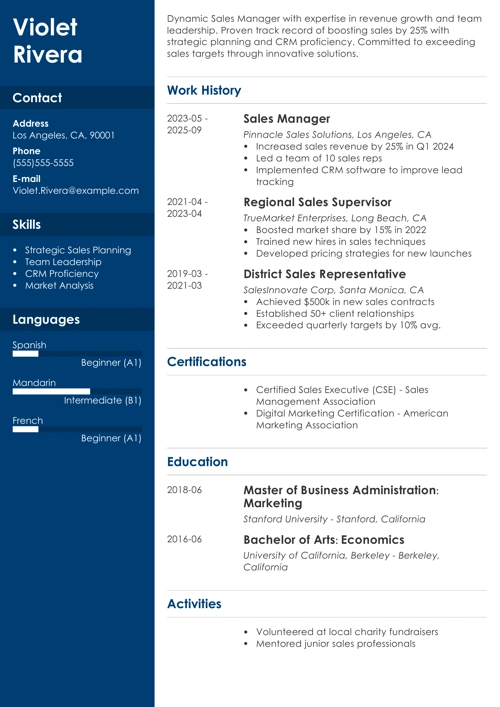So—
You’re looking for icebreaker games and questions to kick off your next meeting.
Look no more.
You’re exactly where you need to be.
We’ve scoured the Internet to bring you the best small and large group icebreaker ideas.
Plus—
You’ll learn how to pick the right icebreaker for your purpose.
This guide will show you:
- Why icebreaker questions and games are great in professional situations.
- What icebreaker questions for work you can ask.
- How to pick the best ice breakers and games for small and large groups.
Looking for other ideas? Read our guides on:
1. Breaking the Ice—Whys and Wherefores
Before you decide what icebreaker activities you want to use—
Give this a thought:
What kind of ice are you trying to break?
Would you simply like people to get to know each other? Or start collaborating?
How much time do you wish to spend breaking the ice?
And—
How many people are you trying to engage?
Make sure the icebreaker games of your choice are well-suited for the purpose of the meeting.
2. Icebreaker Questions for Work
Here we go.
Could you please stand up and tell us a couple of words about yourself?
Wait, what?
Questions like this can easily turn into ice-makers, rather than ice-breakers.
Honestly—
To many people, there’s nothing more stressful than having to speak in front of a group of strangers.
Icebreaker questions are supposed to relax the atmosphere and make people feel comfortable in each other’s company.
Make your icebreaker activities less of an ordeal.
Task your audience with one of the simple and fun meeting icebreakers below:
Icebreaker Questions
- Describe yourself in just a single word.
- What kind of car would you like your workplace to be? Why?
- What annoys you? Why?
- What makes you feel good?
- What would be your theme song? Why?
- What would be your superpowers of choice?
- What is your favorite time of the day? Why?
- Do you like to travel or are you more of a homebody?
- If you could become an expert in any field in a snap, what field would you choose? Why?
- What would be your last meal?
If possible, make people work in small groups. Avoid asking them to step out, and do the task in front of the others. This way, more introverted employees will be more likely to open up.
This set of icebreaker questions will offer everybody a fun way of getting to know each other.
3. Small Group Icebreakers: Icebreaker Games
Depending on your goal and the amount of time you have, you can decide to go a step further.
And—
Engage the group in fun icebreaker games.
Here’s a couple of ideas for small group icebreakers:
Corporate Icebreaker Games for Small Groups—Icebreaker Ideas
- M&M Icebreaker
As the name suggests you will need a bowl of M&Ms (or some other colored candy.) Participants have to answer the questions assigned to different colors of the candy. You can come up with questions which are relevant to the situation. More info here.
- Random Questions
It’s a simpler version of the icebreaker game above. Just print your questions out, put them in a jar, and make people draw a random question. Make sure the questions are appropriate for the context.
- Exquisite Corpse
This icebreaker game dates back to the times of the Surrealists. It boils down to folding a single piece of paper in three sections and giving it to a different person or group to draw the head, torso, and the legs. The thing is that no one can see what the others have drawn until the picture has been finished. As you imagine, the result is usually hilarious, and there’s a lot to talk about. More info here.
- Hot and Cold
What’s the agenda for today? Well, you need to find it first! The agenda, handouts or questions are hidden somewhere in the room. The closer you are to the hidden object the "hotter" it gets, the farther you are the "colder" it gets. A game of hot and cold can turn into a stimulating and creative icebreaker at the beginning of a meeting or a workshop.
- Little-Known Fact
This quick icebreaker activity is pretty basic and involves participants to introduce themselves to the group. The introduction, apart from the name, and position in the company, should offer a humanizing “little-known fact” about the person. Everyone is free to choose what they want to share.
- True/False
That’s a variation of the meeting icebreaker above. Your introduction to the group should have one false bit of information about you. The other participants are to guess which piece of info is untrue.
Be careful with numbers 5 and 6. Make sure everyone feels comfortable enough to speak in front of others.
Plus, most of these activities are great icebreakers for kids, teens, and college students alike. A caveat: if you go for the M&M icebreaker with kids, you may run out of candy sooner than you think.
And here’s a couple of ideas for team-building icebreaker activities:
Team Building Icebreaker Games for Small Groups
- Connecting Stories
This small group icebreaker helps participants find out what they have in common. One person tells a super-short story about themselves. For example, I once started talking to a stranger in the street because I thought I was talking to a friend of mine. It took me 10 seconds to realize I’d made a mistake, but I was too embarrassed to cut the conversation off, so I just kept talking. It was pretty strange. And someone else takes over: I’ve never talked to a stranger in a similar situation, but I loved the second season of Stranger Things… As you see, the connections can be pretty loose.
- The Marshmallow Challenge
It’s a simple team-building activity. You’ll need dry spaghetti pasta sticks, a yard of tape, and a marshmallow. The goal is to build the tallest possible tower that will support a marshmallow. Learn more about it here.
- Blind Drawing
This works best in groups of two. One person gets a picture, the other gets a pencil and a blank sheet of paper. The one with the picture describes what they see in the picture, and the other draws it. This team-building exercise not only helps the participants build rapport but also shows how much depends on precise communication.
Again—
Most of these team-building activities are not just for adults. They can serve as icebreakers for high school students or kids.
Be careful with the marshmallows though. Especially if you’re a camp counselor, and there’s a campfire nearby.
4. Ice Breakers for Large Groups
Icebreaker activities for large groups might seem pretty daunting.
The first question you might want to ask yourself is—
Do you absolutely need to come up with anything like a conference icebreaker?
What would be the purpose?
Maybe the only thing you really need to do is to introduce yourself in an engaging way, and smile?
Seriously—
If you want to engage an audience of 150+ people in an ice-breaking activity, you must have a really good reason to do so.
So, plan everything beforehand, and make sure your large group icebreaker is not the only thing you have to offer to your audience.
Here are a couple of icebreaker ideas that may work with the auditoriums filled up to the last seat:
Ice Breakers for Large Groups—Examples
- Polls
Simple polls are good icebreakers. Nothing too fancy. A simple question along the lines of “How many of you…?” and show of hands can do the trick. Your audience will have a chance to see if they’re seated next to a like-minded individual.
- Live polls
There are a couple of online apps which may turn your audience’s smartphones into vote casting devices. No additional apps required. Try this for example. In fact, such solutions may turn out to be helpful to plan something more than just simple icebreakers.
- Creative icebreakers
This approach is a bit unorthodox, but your talk or presentation can gain an entirely new dimension. Just make sure that this offbeat icebreaker of yours serves a deeper purpose. How far can you go? How about asking the audience to give the person next to them their phone unlocked? Or starting a snowball fight? Or asking people to draw instructions on how to make toast? The sky's the limit.
- Coffee break tasks
Not really a large group icebreaker per se, but a lovely way to encourage people to get to know each other better. May require some planning in advance, but definitely worth the effort. Simple tasks work great. For example: Find someone who… Talk to at least 10 people about... etc.
5. Best Ice Breakers
If there exists a single word to describe what the best ice breakers should be like, it’s this—
Inclusive.
Or none at all.
Have you ever heard of the so-called negativity bias?
To cut a long story short—
When people are exposed to positive and negative stimuli of the same intensity, the negative ones will affect them more.
In other words, we tend to remember bad things better.
With this in mind, think about your next icebreaker exercise.
Can it potentially make someone feel bad? What about the introverts? Have you taken them into consideration?
If you’re having second thoughts—
Drop it.
Sometimes the best icebreakers are no icebreakers.
Remember the iconic scene in Enter the Dragon?
The art of fighting without fighting can be your winning strategy. Even if your fighting skills are second to none.
Listen:
People may feel really uncomfortable when asked to share intimate facts about themselves in front of others.
Just look at the last sentence one more time.
It feels just as unnatural as it reads.
Plus—
When you’re supposed to introduce yourself to a group and add some super-cool facts about yourself, you’ll spend more time thinking about what to say than listening to others.
Don’t go for fun icebreakers just for the sake of putting them on your agenda.
It’s not worth it.
So—
What are the alternatives to icebreaker games?
You can allow things to develop organically. People will start cooperating if this is what they’re expected to do. You don’t need to push them into doing stuff they feel uncomfortable with.
Plan your group icebreaker games with different types of people in mind. Don’t let anyone feel excluded. As a facilitator and moderator, you’re responsible for making sure everyone feels safe.
And to make things clear.
I don’t want to subvert the entire idea of icebreakers.
The point is—
To achieve maximum effect, the activities you choose must be something more than a bunch of meaningless icebreaker games for adults.
Know your whys and wherefores.
Key Takeaways
Icebreaker activities should be well thought-out and make everyone feel good. So:
- Plan your icebreakers with a purpose in mind.
- Make sure they’re inclusive.
- Adjust the type of ice breaker activity to the size of your audience.
- If you’re having doubts, just drop it.
About Zety’s Editorial Process
This article has been reviewed by our editorial team to make sure it follows Zety's editorial guidelines. We’re committed to sharing our expertise and giving you trustworthy career advice tailored to your needs. High-quality content is what brings over 40 million readers to our site every year. But we don't stop there. Our team conducts original research to understand the job market better, and we pride ourselves on being quoted by top universities and prime media outlets from around the world.

